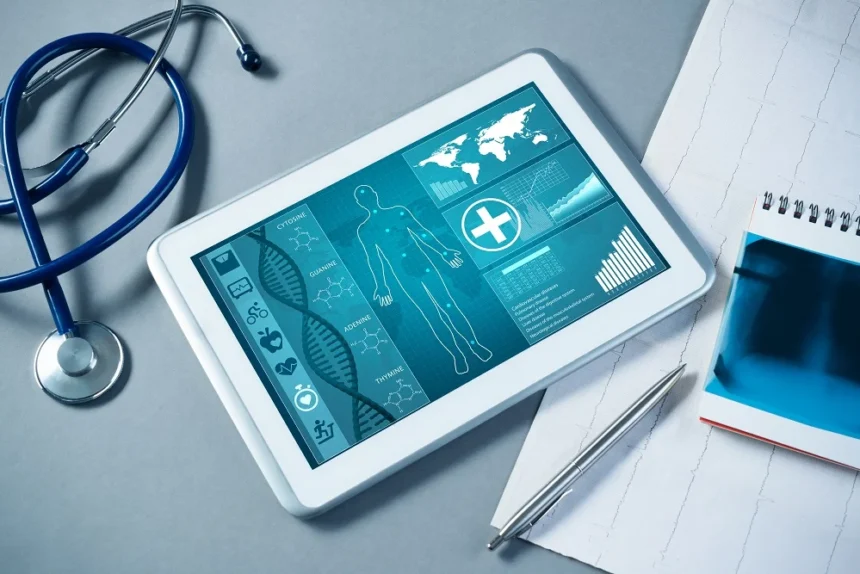Modern medical device integration transforms the healthcare industry by improving patient care, simplifying clinical procedures, and enhancing data precision. Despite this, achieving seamless medical device integration presents various obstacles like interoperability issues, data security worries, and the intricacy of integration processes (according to many years of Topflight’s experience).
Nevertheless, you can rest assured that this article looks into these challenges and presents possible solutions to navigate the complex terrain of medical device software integration.
What Is the Importance of Medical Device Integration?
Integration of healthcare devices is vital for transforming patient care. For instance, communication and data sharing among different devices help establish a comprehensive and precise patient record. This real-time data sharing improves clinical decision-making, resulting in enhanced patient outcomes.
Furthermore, interconnected systems streamline processes by automating data input, minimizing the possibility of human errors, and allowing healthcare professionals to concentrate on patient care. Enhanced data accuracy and accessibility are also essential for precise diagnosis and treatment, as well as for meaningful research and analysis.
Key Challenges in Modern Medical Device Integration
Integrating medical devices, especially highly specialized or complex ones, presents significant challenges. Devices like advanced imaging systems (MRI, CT scanners), intricate surgical robots, and complex laboratory equipment often require sophisticated software interfaces and extensive data handling capabilities. These systems need to seamlessly communicate with existing hospital information systems like electronic health records (EHR) and ensure high data security and patient privacy standards. In addition, devices that involve real-time data monitoring and reporting, such as those used in critical care settings, pose integration challenges due to the need for continuous, reliable, and accurate data transmission. The complexity increases with regulatory requirements, which vary by region, demanding rigorous compliance checks and validation to ensure patient safety and efficacy. These factors make integrating certain types of medical devices a complex and resource-intensive endeavor.
Interoperability Issues
Achieving interoperability is difficult because of the wide range of device manufacturers and the absence of universal standards. Different devices often use their protocols, making it challenging to facilitate smooth communication between them. This lack of standardization impedes merging devices from different providers into a unified system.
Data Security and Privacy Concerns
Medical device data integration is vital due to its sensitivity. Connecting multiple devices increases the potential for security breaches, leaving the system more susceptible to cyber-attacks. Furthermore, healthcare organizations must adhere to rigorous regulations such as HIPAA (Health Insurance Portability and Accountability Act) and GDPR (General Data Protection Regulation), which require robust data security and privacy measures.
Complexity of Integration Processes
Medical device software integration demands substantial technical know-how. The process involves configuring devices, establishing communication protocols, and ensuring seamless data flow across systems. This complexity often results in high expenses and significant resource allocation, which can be challenging for many healthcare facilities.
Legacy Systems Compatibility
Many healthcare organizations still depend on outdated legacy systems that were not built with modern integration in mind. These systems often lack the necessary interfaces and protocols to integrate with newer technologies. Upgrading or replacing legacy systems presents a significant challenge due to associated costs and potential operational disruptions.
User Resistance and Training Needs
Healthcare professionals might hesitate to adopt new integrated systems due to their familiarity with existing workflows or doubts about the benefits of new technology. Moreover, introducing new systems necessitates comprehensive training programs to ensure the effective utilization of the integrated devices. Ongoing support is also essential to address any post-implementation issues.
Potential Solutions and Best Practices
Standardization and Interoperability Initiatives
To achieve interoperability, universal standards, such as HL7 (Health Level Seven International) and FHIR (Fast Healthcare Interoperability Resources), must be adopted. These standards offer guidance for data exchange and ensure effective communication between devices. Collaborative efforts among device manufacturers, healthcare providers, and regulatory bodies are necessary to encourage widespread adoption of these standards.
Robust Cybersecurity Measures
Implementing advanced encryption and security protocols is essential for safeguarding healthcare data. Regular security audits and compliance checks can help identify and rectify vulnerabilities. Furthermore, using multi-factor authentication and intrusion detection systems can improve the overall security of integrated healthcare systems.
Streamlined Integration Processes
Middleware and integration platforms can simplify the medical device software integration process. These solutions serve as intermediaries, enabling different devices to communicate without extensive reconfiguration. Scalable and flexible cloud-based solutions allow healthcare organizations to integrate devices more efficiently and cost-effectively.
Modernizing Legacy Systems
It is necessary to gradually upgrade or replace legacy systems to ensure compatibility with modern devices. Careful planning of this process is important to minimize disruptions. Also, ensuring backward compatibility during upgrades can help maintain continuity of operations while transitioning to newer systems.
Comprehensive Training and Change Management
Developing ongoing training programs is important to help healthcare professionals adapt to new integrated systems. These programs should cover system functionalities, troubleshooting procedures, and best practices for data security. Involving stakeholders throughout the integration process can also foster acceptance and collaboration, thereby reducing resistance to change.
Summary
Medical device integration is critical for improving patient care, enhancing clinical workflows, and ensuring data accuracy. Yet, it encounters obstacles to interoperability, security, intricacy, outdated systems, and user opposition. Overcoming these hurdles necessitates standardization, strong cybersecurity measures, efficient integration procedures, modernizing older systems, and comprehensive training.
The path to achieving seamless integration of healthcare devices is intricate but indispensable. Thus, collaborating with medical device integration vendors can help surmount these challenges and adopt cutting-edge solutions.
Author:
Priya Raeesa
Priya is an experienced mobile app developer with a flair for simplifying complex concepts. Her articles aim to demystify the app development world and empower others to create innovative mobile solutions.






